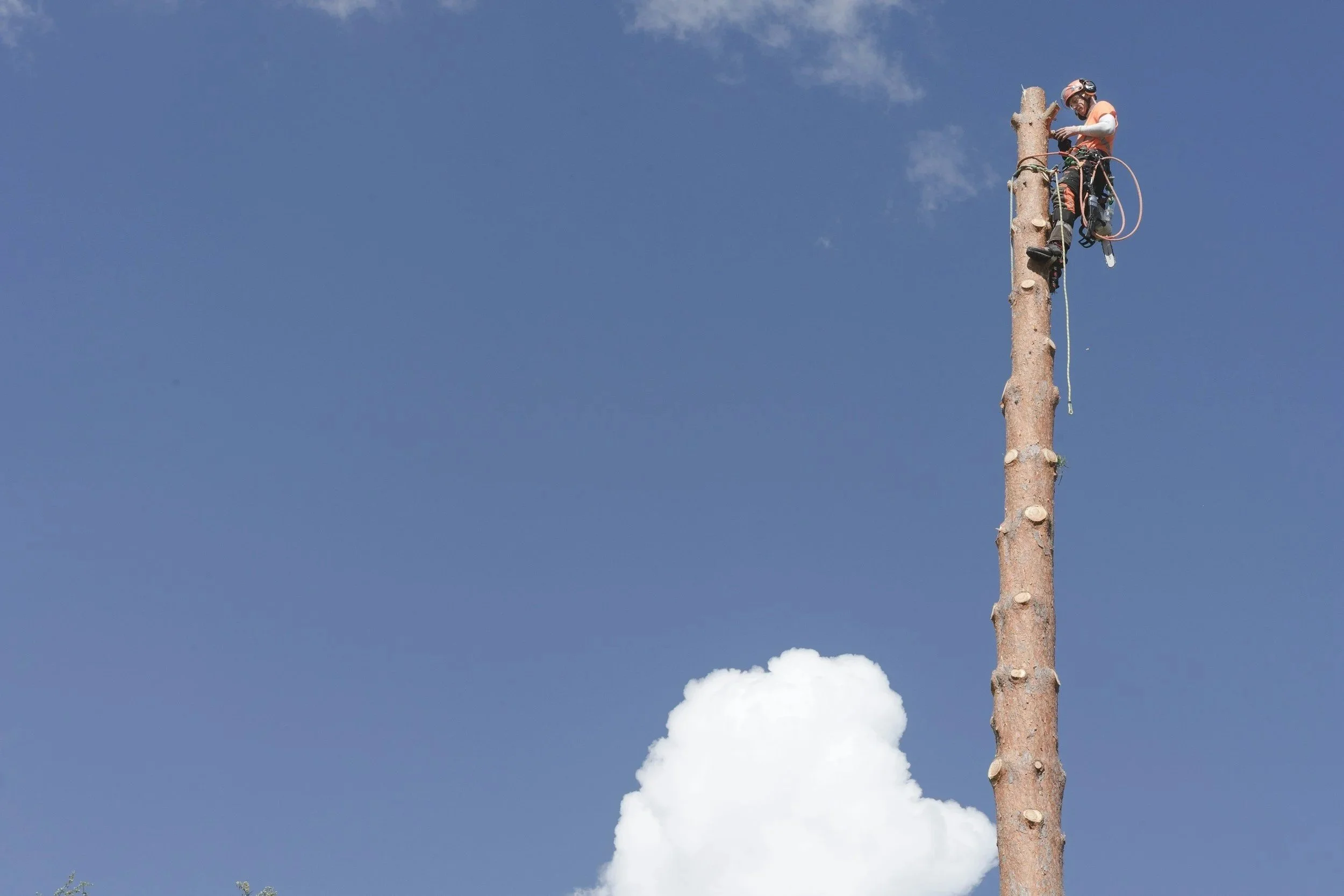Ten Reasons to never “top” your trees
Tree topping — hacking the entire top section out of a tree looked like a handy quick‑fix back in the 1950s. Fast‑forward to today and most arborists regard it the way physicians view blood‑letting: an interesting historical footnote, but definitely not a best practice. Yet this bad practice lingers, kept alive by well‑meaning neighbors and bargain‑basement “tree crews” with more bravado than training. Let’s dig into why topping harms trees, wallets, and even communities, and highlight the science‑backed alternatives that make the old technique obsolete.
1. A Shock to the System
Imagine your dentist removes 80 percent of your teeth “for easier chewing.” That’s the physiological punch a tree feels when its canopy disappears overnight. Leaves are food factories; strip them away and you cut off the energy stream that fuels growth and defense. The tree has to raid carbohydrate savings intended for roots, flowers, and pest resistance just to stay alive. Many don’t make it through the next drought.
2. A Magnet for Disease & Decay
Proper pruning cuts are made just outside the branch collar, allowing a tree to compartmentalize and seal the wound. Topping cuts aren’t. Stubs split, heartwood is exposed, and opportunistic fungi, borers, and bacteria are attracted to the fresh wound. Within a few seasons long columns of rot travel down the branch—sometimes into the trunk—undermining structural stability and slicing decades off the tree’s life expectancy.
3. Sprouts do not make strong branches
Topping rarely creates a permanently smaller tree. In survival mode, many species push out dozens—sometimes hundreds—of ultra‑fast epicormic shoots around each stub. These sprouts can grow several feet per year, but they’re attached with weak, shallow tissues. Picture broom handles hot‑glued to a phone pole; that’s roughly how secure they are. As sprouts gain weight they snap, becoming airborne projectiles in the next thunderstorm.
4. Sunburn Isn’t Just for Humans
Leaves shade and insulate bark. Remove them and the upper trunk heats like a dashboard in July. Sudden temperature spikes cook the cambium, leading to sunscald cracks, oozing sap, and bark sloughing. Heat injury further weakens the defense system, inviting even more decay.
5. Aesthetic impact
A topped tree is an ugly tree. Curb appeal plummets, and real‑estate professionals routinely knock thousands of dollars off market value when prominent trees have been topped. Many HOAs and city codes now list topping as a violation, so the aesthetic problem quickly becomes a legal one.
6. Hidden Costs & Endless Maintenance
Because it’s fast, topping may look cheaper than skilled pruning. The bargain is short‑lived. Sprout regrowth forces repeat pruning every one to three years. Add emergency removals after limb failures, roof repairs, and potential liability when branches land on cars, and the original “discount” morphs into a money pit. By contrast, proper structural pruning every five to seven years is usually far cheaper across a tree’s lifetime.
7. Safety Risks
Homeowners often request topping because they fear tall limbs falling. Unfortunately, topping creates limbs more likely to fail—weakly attached sprouts, extensive internal rot, and lopsided weight distribution form a perfect hazard cocktail. The practice chosen for safety actually increases risk.
8. Ecological Fallout
Urban trees already battle heat islands and cramped root zones; topping only adds extra stress. Defoliated crowns provide less shade, raising neighborhood temperatures and energy bills. Wildlife loses nesting sites. Furthermore, a heavily decayed tree can shift from a carbon sink to a carbon source as fungi release CO₂. Multiply this effect across a whole street of topped maples and the environmental cost balloons.
9. Outdated Knowledge & Better Alternatives
Topping caught on when pruning standards were young, bucket trucks were new, and fast crew turnover made “cut it all” appealing. Today we have ANSI A‑300 pruning standards, ISA‑Certified Arborists, and decades of arboricultural research. Superior options include:
Crown reduction – Shortening specific leaders back to strong laterals while preserving the natural outline.
Crown thinning – Removing selected interior branches to reduce wind sail without gutting the canopy.
Structural pruning – Training young trees to develop a dominant leader and well‑spaced scaffold limbs so drastic future cuts aren’t needed.
Right‑tree/right‑place planning – Planting the correct species for the available space; a serviceberry never needs “height control” under powerlines.
Take a look at our article on correct pruning practices.
9½. The Legal Landscape
The shift from “topping accepted” to “topping outlawed” is happening quietly but rapidly. Cities such as Austin, Seattle, and Charlotte now levy fines for topping street trees, labeling the act “irreparable damage to public assets.” Insurance companies increasingly deny storm‑damage claims if investigations reveal the tree had been topped. Even some utilities — once staunch topping advocates—have switched to directional pruning or underground lines. Staying on the right side of the law (and your insurer) now means steering clear of the chainsaw‑crew special.
10. The Big Picture: Respect the Biology
Trees don’t heal—they compartmentalize. Every topping wound is permanent baggage the organism must wall off. A proper pruning cut respects the branch collar, minimizes wound surface, and leaves the tree with enough leaf area to thrive. Prune with biology in mind and you get longer‑lived trees, safer streets, healthier ecosystems, and lower long‑term costs.
Conclusion
Topping is an outdated, dangerous and irresponsible practice: once ubiquitous, now obsolete. Modern arboriculture provides refined techniques that keep trees sized for urban spaces without gutting their health. If someone suggests topping yours, remember—this practice is rooted in outdated misconceptions, and the hidden costs sprout faster than any branch you’ll remove. Hire a certified arborist, invest in proper pruning, and let your trees reach new heights—safely, gracefully, and rooted in science.

